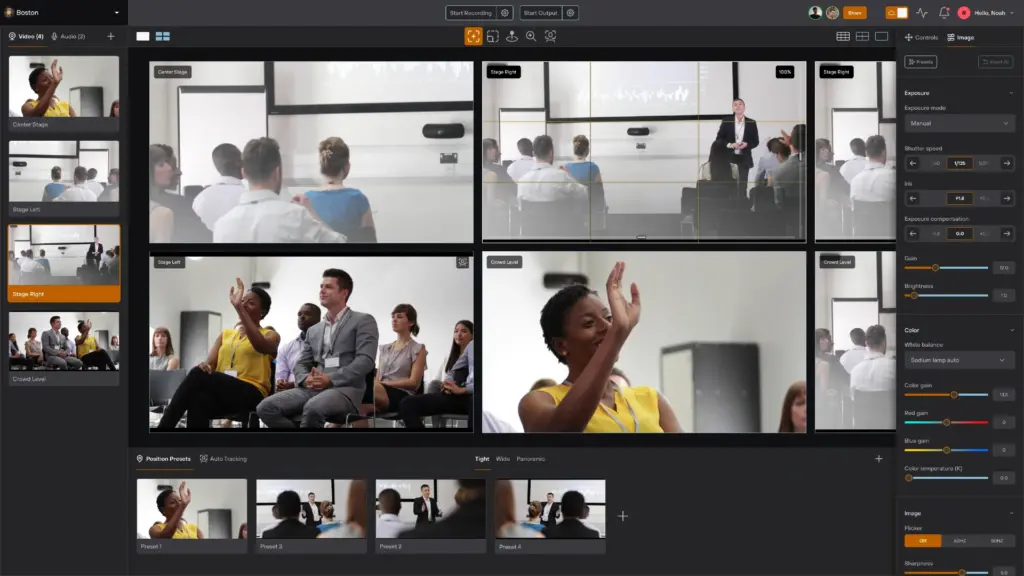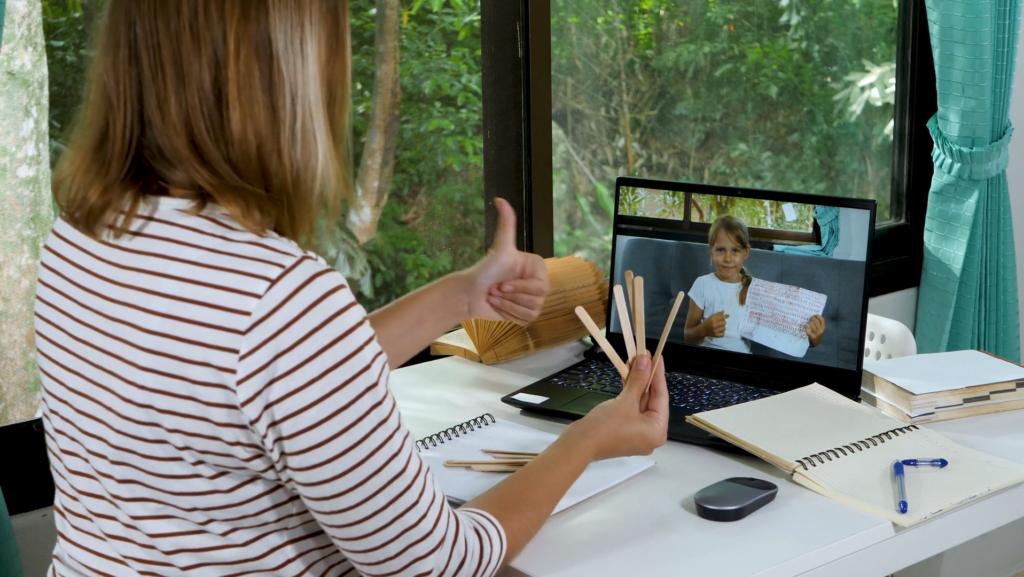How to Live Stream a Class
Written by Paul Richards on August 12, 2020
After the launch of Technology Tools for Online Education, our team has scheduled a bunch of free training sessions geared toward online education. In this blog post, you can learn about “How to live stream a class” and think about the various types of video communication tools you can use to do so. The included Slideshare presentation is available for download if you would like to print it out or keep for reference. You can also download Technology Tools for Online Education book here.
Live streaming a Classroom
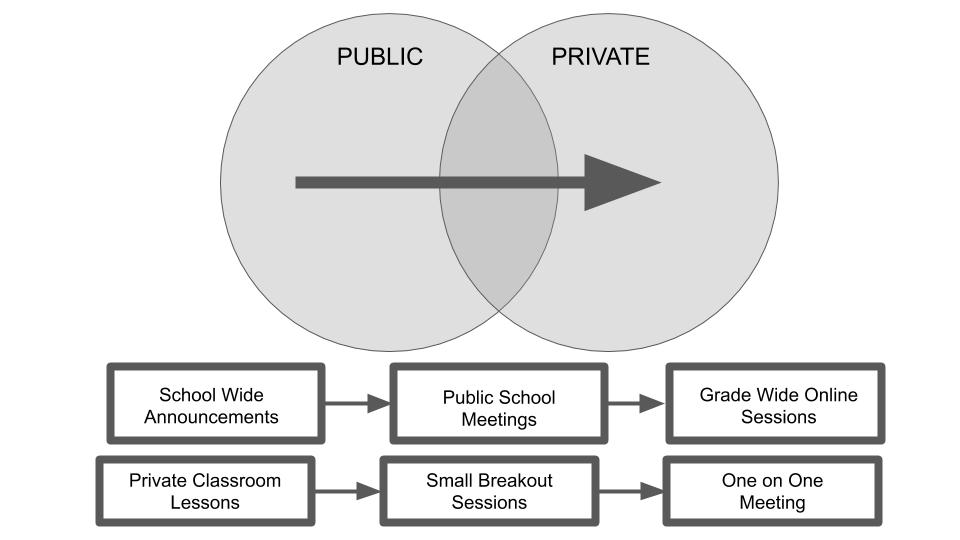
Private Classroom Lessons
When it comes to “live streaming a classroom” the first thing you should consider is privacy. Do you want the entire world to be able to see your live stream or just your students? Here is a shortlist of education online communication types you could consider:
- School-Wide Announcement (ideal for live stream)
- Public School Meeting (ideal for live stream)
- Grade Wide Online Session (ideal for private live stream)
- Private Classroom Lesson (ideal for online meeting technology)
- Small Breakout Sessions (only available with video conferencing software like Zoom)
- One on One Meeting (ideal for online meeting technology)
As you can see, the list above goes from public-facing live streams to private online meetings. It’s important to start by considering your audience and the type of live stream or online meeting you want to host.
The Flipped Classroom
As you start to use online communication technology as an educator it’s important to consider the flipped classroom model. Essentially the flipped classroom allows students to do the traditional “homework” in class and provides lecture materials online via the internet. This model flips the old method of teaching and allows students to digest lectures at their own pace online. At a high level, the flipped classroom translates very well to distance learning and online models. Therefore, thinking about online streaming and video communication technology is essential to the successful deployment of a flipped classroom.
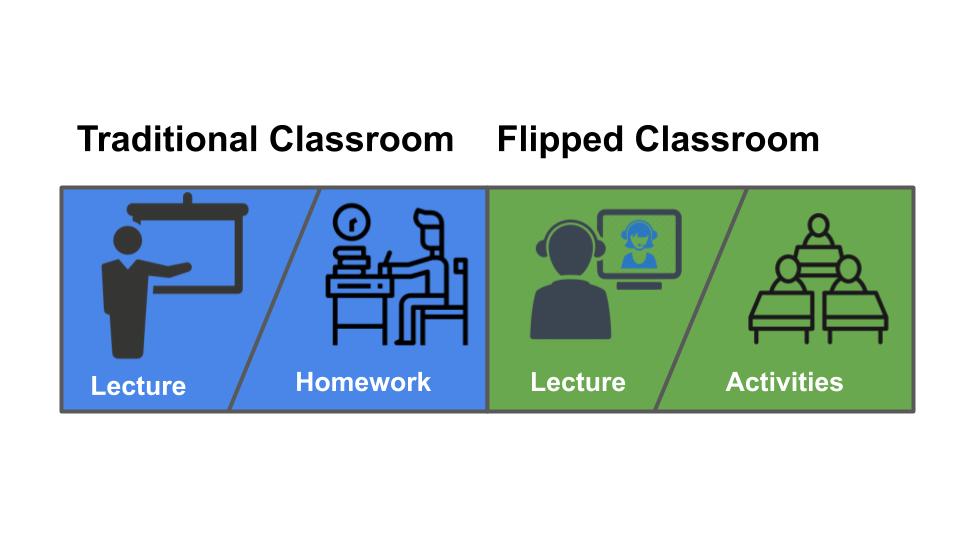
Traditional Classroom vs Flipped Classroom
Flipped Classroom Example:
See the following flipped classroom and traditional classroom examples below. Consider the differences as students transition between before and after class time.
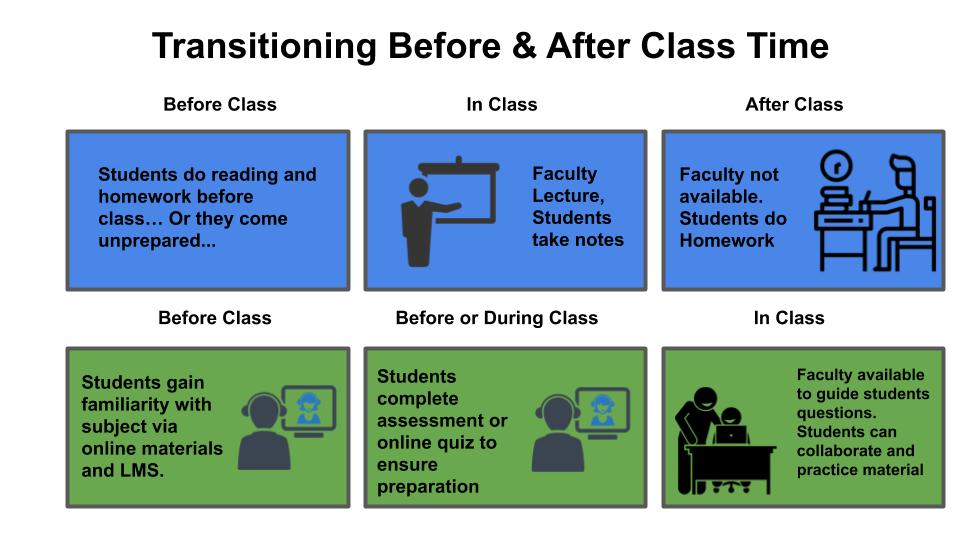
Transitioning Before & After Class Time
Traditional Classroom Example
- Before Class: Students do reading and homework before class… Or they come unprepared…
- In-Class: Faculty Lecture, Students take notes
- After Class: Faculty not available. Students do Homework
Flipped Classroom Example
- Before Class: Students gain familiarity with subject via online materials and LMS.
- In-Class: Students complete assessment or online quiz to ensure preparation
- After Class: Faculty available to guide students questions. Students can collaborate and practice material
Using Online Communication Tools
If you only need to host private lessons with your students then the effective use of online communication tools such as Google Meet and Zoom will become important. Here is a shortlist of tips you should consider:
- Share Personal Stories: Sharing personal stories helps individual team members better understand their peers. Personal stories foster the relationship-building process which is foundational to team communication.
- Create Equity of Voice: Achieving equity of voice requires a conscious effort to give each meeting member an equal opportunity to speak during the meeting. For example, in a five-person meeting each member of the team would speak one-fifth of the time and listen four-fifths of the time. The listening side of equity of voice is what makes it effective.
- Look for Equilibrium of Voice: Equilibrium of voice is a communication strategy that attempts to maximize meeting performance based on goals set in a meeting agenda. A meeting with perfect equilibrium of voice optimizes the most relevant speakers of a group based on the established agenda and the participants’ roles in the overall group.
See the chart below to determine when your online meetings should strive to achieve equity of voice or equilibrium of voice.
| COLLABORATION SESSION
(EQUITY OF VOICE) |
STUDENT/TEACHER PRESENTATION
(EQUILIBRIUM OF VOICE) |
| Team collaboration | Lecture or Presentation |
| New project brainstorming | Weekly class update meeting |
| New class get team-building exercises | Student performance review meeting |
| Inter-class or team collaboration | Classroom Hours |
| Educational round table | Subject Matter Expert |
Live Streaming Your Classroom
Video production tools have an important place in the classroom. In Technology Tools for Online Education, you will learn how to use OBS to create engaging videos for your online LMS systems (learning management systems). This same software can be used to live stream your class to the world. When you are live streaming remember that most free sites such as YouTube and Facebook are free. There are private CDN (Content Delivery Networks) that you can use to stream your content to the world privately. Again, reference our list of recommended technologies and think about whether your content should be private or public.
Conclusion
Any modern educator should be thinking about their proficiency with video making. Luckily, smartphones are great cameras, and regular laptops can become video production systems. With a little bit of knowledge and a desire to learn, teachers can create videos that really engage. If you decide to learn how to use OBS, then you can use the same software to create lecture materials as you will for live streaming your events. How can you get started? Check out Technology Tools for Online Education and read the free book. Then consider taking the online course on Udemy linked to below.
- Paperback Link – https://www.amazon.com/dp/B08F6DJ2R8
- Kindle Link – https://www.amazon.com/dp/B08F75Q7YH
- Udemy Course link.
- Book Download – https://streamgeeks.us/techedu/
